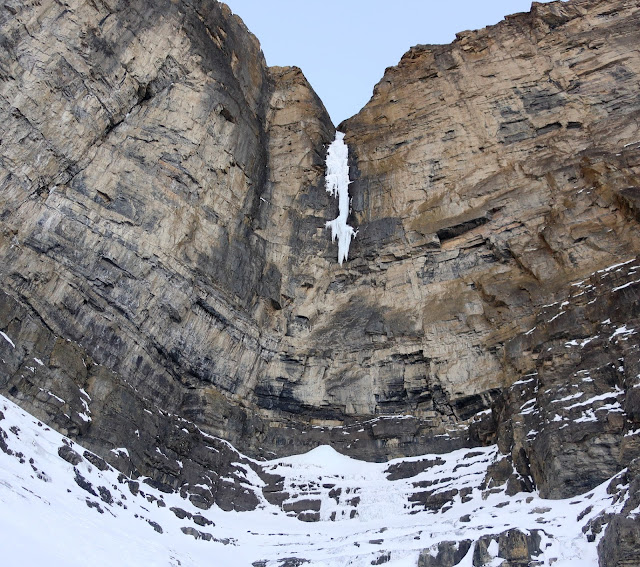Denali: Travels with Dad
A few days ago I got back from the Alaska Range. My father Andre and I spent a couple of weeks on Denali, trying for a family ascent of the West Buttress. Andre, who is in his early seventies, has been climbing for over fifty years. Starting in the Polish Tatras, his mountain travels have taken him to Nepal, South America, and of course all over the Canadian Rockies. He started me on my climbing journey, and I felt fortunate to be able to go up north with him.
We went through the usual ritual of a Denali trip: fly to Anchorage; realize that it does not get dark at that latitude in late May; go on a massive food shopping spree; drive to Talkeetna; get issued a Clean Mountain Can by the rangers; and finally fly to the southeast fork of the Kahiltna Glacier; all of this in less than forty eight hours. The weather was absolutely spectacular. This was my third trip to the Alaska Range, but only the first time I saw the mountains from Talkeetna. They looked very big, very white, and incredibly beautiful.
We took our time traveling on the lower glaciers, arriving at 11k (a.k.a. the eleven-thousand-foot camp) on the morning of our third day in the mountains. Both of us were new to hauling sleds, and while it was nice to drag rather than carry most of the weight, it still made for a bit of a slog. All I can say is that I was glad to have my iPod: Gordon Lightfoot and Rammstein went a long way toward easing the pain of skinning uphill with the kitchen sink following behind on a red plastic sled. In the spirit of the adage "climb high but sleep low", we spent a couple of nights at 11k with a day trip to 14k (a.k.a. the fourteen-thousand-foot camp) before moving up there for good.
Andre on the West Buttress of Denali.
Glacier plane, clouds and Foraker.
We went through the usual ritual of a Denali trip: fly to Anchorage; realize that it does not get dark at that latitude in late May; go on a massive food shopping spree; drive to Talkeetna; get issued a Clean Mountain Can by the rangers; and finally fly to the southeast fork of the Kahiltna Glacier; all of this in less than forty eight hours. The weather was absolutely spectacular. This was my third trip to the Alaska Range, but only the first time I saw the mountains from Talkeetna. They looked very big, very white, and incredibly beautiful.
Denali seen from the shores of the Susitna River.
TAT, our ticket to the mountains.
The many colours of the tundra.
The east side of Denali from the flight in.
We took our time traveling on the lower glaciers, arriving at 11k (a.k.a. the eleven-thousand-foot camp) on the morning of our third day in the mountains. Both of us were new to hauling sleds, and while it was nice to drag rather than carry most of the weight, it still made for a bit of a slog. All I can say is that I was glad to have my iPod: Gordon Lightfoot and Rammstein went a long way toward easing the pain of skinning uphill with the kitchen sink following behind on a red plastic sled. In the spirit of the adage "climb high but sleep low", we spent a couple of nights at 11k with a day trip to 14k (a.k.a. the fourteen-thousand-foot camp) before moving up there for good.
Andre below 11k.
The train leaving the 11k station.
Andre returning to the 11k camp with the Peters Basin far below.
Rounding Windy Corner.
The sun about to set on the 14k camp.
Set at an altitude of 4300 m, the 14k camp gave us our first taste of thin air. When we first got there, even walking across camp up to the outhouse made us winded. But we gradually grew comfortable with only two-thirds of our usual oxygen supply. After a day's rest, we went on an acclimatization hike up the Headwall to the the crest of the West Buttress. The stretch of ridge between the top of the Headwall and 17k (a.k.a. the seventeen-thousand-foot camp) is without a doubt the most beautiful section of the West Buttress: not difficult but spectacularly exposed, a true sidewalk in the sky.
The ridge below 17k.
Andre on the fixed lines below the crest of the West Buttress.
Gaining the crest with Foraker in the distance.
Unfortunately, the top of the Headwall at 4900 m was the highest Andre was able to get. We tried three times but every time his body refused to go higher. It hurt me to see how hard he pushed himself, and how disappointed he was when we finally decided that it was not going to happen. He had just lived through a year of loss, and had trained relentlessly for the trip, averaging over two vertical kilometres a week for several months. He was fit, and by all the usual indicators, well acclimatized. However, he just could not push his body any higher. There was nothing for it but to head down. Yet summit or no summit, we lived through a great adventure together. I know he is not done with the mountains; in fact, he might not even be done with this particular mountain. And so it is not "goodbye", but merely "until next time".
Andre at 4900 m on the West Buttress of Denali.


















Comments
Post a Comment